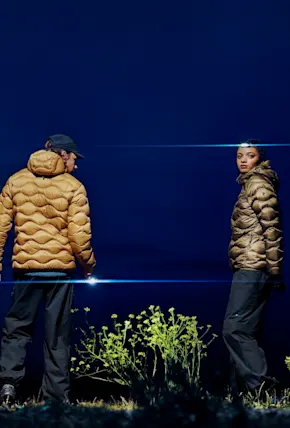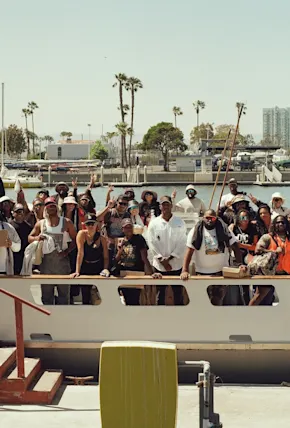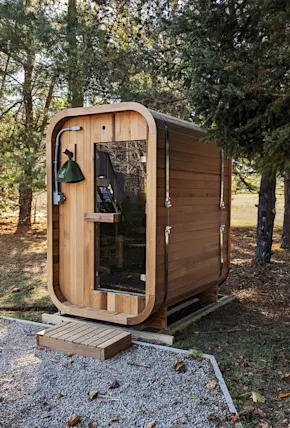9 Ways to Be a More Responsible Forager, According to the Experts
1. Start with what you're comfortable with. Foraging varies wildly by geography, season, and native/non-native plants. If you want to learn how to forage, you've likely been told to be cautious, educate yourself about plant species to avoid poisonous plants, and be 1000 percent sure that whatever you've foraged is safe to eat. As Alexis Nikole recently shared with Thrillist, "I'm a huge advocate of never bringing anything home to cook, unless I'm 100 percent sure of what it is." For beginners, Holl recommends researching easy to identify wild edible plants in your area, like wild greens as a good jumping-off point. Joining local foraging groups so you can learn from pros is another option.
2. Forage for invasive species. Carnivore, herbivore, locavore...Linda Black Elk wants us to be "invasivores," a moniker that encourages foragers to seek out healthy, delicious, invasive plant species. "Many invasive plants have huge medicinal and nutritional benefits, and it helps free up habitat for native plants." Invasive wild plant species can be a huge issue, leading to the endangerment or decline of native plants, so harvesting them is a great way to help out your native flora.
3. Be respectful of other foragers. Don't reveal good foraging spots on the Internet. Seasoned foragers are sometimes wary of sharing good spots or info with beginners for fear that their favorite haunts will become overrun. It's far from an unreasonable concern, as social media and oversharing of outdoor information (cough, geotagging, cough) can definitely lead to overcrowding, degradation, or outright destruction of fragile wild places. Holl says that if you find a good spot, don't tag it on social media and only share such information with trusted individuals.
4. Leave the forest cleaner than when you came. As with hiking and camping, never litter while you're foraging, pack out all trash, and hold other people accountable, too. Holl makes it clear. "You should be clean [with your cutting] and care more than the last person," he says. That includes packing out other people's trash. Not everyone who enjoys nature is mindful of their impact, but you can be.
5. Be prepared for all weather. Just like with any outdoor activity, always be aware of what the weather is like and what the forecast is before heading off in search of goods. Pack the appropriate gear, including for emergencies.

Photography by Philipp Wortmann
6. Be aware of your surroundings. It can be easy to lose your sense of direction while out foraging. Holl stresses that you need to have your wits about you and know wilderness survival and preparedness. "You need to activate your senses and educate yourself," he says. This applies to wild animal encounters as well—you're encroaching on their home, not the other way around. Additionally, make sure that you're permitted to forage in any particular location as laws can vary on public and private land. On private land, you may need to ask permission from the owners or seek permits.
7. Be as sustainable as possible. Try to keep your impact and footprint——literal-and-nonliteral—as small as possible. This means don't forage with large groups, avoid creating new trails, and don't trample plants and other flora as you search for prized wild foods.
8. Be open to leaving things behind. Not every foraging trip needs to result in a big yield. Sometimes time enjoyed outdoors, increasing your awareness and education, is enough. If you find a small patch, it's best to leave it so it can grow in. If you find a large patch, don't take all of it. A good rule of thumb is to only take between one-tenth and one-third of a lot. In addition to being kind and leaving some for others to potentially find, it also helps prevent over harvesting and ensures the plant can regrow naturally.
9. Know the best way to harvest each plant. One of the best ways to make sure the plants you leave behind can successfully continue growing is to know the best way to harvest them. Linda Black Elk says that "Every plant has a preferred way to be harvested sustainably." So be sure to read up on local edible plants to know whether they can be pulled up, roots and all, or whether they should be cut.
More Foraging Resources
As foraging gains popularity as a form of outdoor recreation, it's important to educate yourself about its roots and ethics, especially with regards to Indigenous communities and how foraging allows us to decolonize our relationships with food and nature. To learn more about foraging and its history and culture from marginalized voices and communities, as well as hone and improve your foraging skills, check out the following resources.
The Forager’s Harvest: A Guide to Identifying, Harvesting, and Preparing Edible Wild Plants by Samuel Thayer: This classic foraging book is often recommended as a great beginner's guide to foraging. It identities hundreds of edible plants around North America and comes with full-color photos to help with identification.
The National Audubon Society Field Guide to Mushrooms: Mushrooms are a popular food item to look for while foraging, and this comprehensive primer covers hundreds of North American varieties with color photos, information about seasonality, and so much more. There's also a section on preparing and cooking mushrooms.
Pacific Northwest Foraging: With this handy field guide, residents of Southeast Alaska, Washington, Oregon, and British Columbia can identify 120 edible plants throughout the region, from herbs to berries.
Northeast Foraging: Residents of the East Coast can use this regional guide, which highlights 120 species of wild edible plants commonly found in Eastern Seaboard states like New York, Maine, Pennsylvania, and others.
I-Collective: An autonomous group of Indigenous chefs, activists, herbalists, seed, and knowledge keepers, I-Collective's mission is to raise awareness of and promote Indigenous food sovereignty and historic and current contributions and innovations in diverse fields like agriculture, cuisine, and more.
Karlos Baca: A member of I-Collective, Karlos Baca is an Indigenous foods activist whose work is focused on Indigenous food sovereignty and decolonizing food systems. He's also the founder of Taste of Native Cuisine, a food cooperative and farm based on Southern Ute lands in southwestern Colorado.
Foraging also requires the right gear, like this stylish and practical foragers jacket from Japanese outdoor brand Goldwin.








